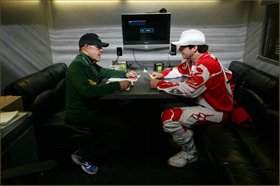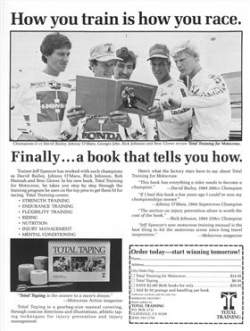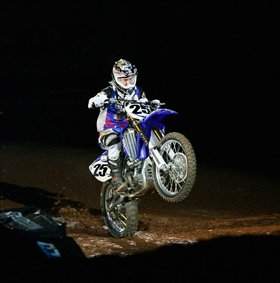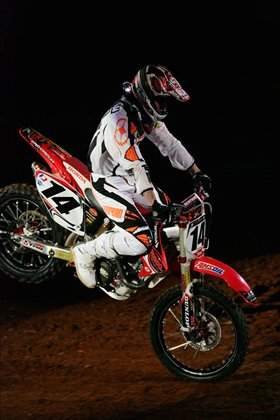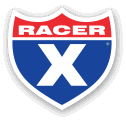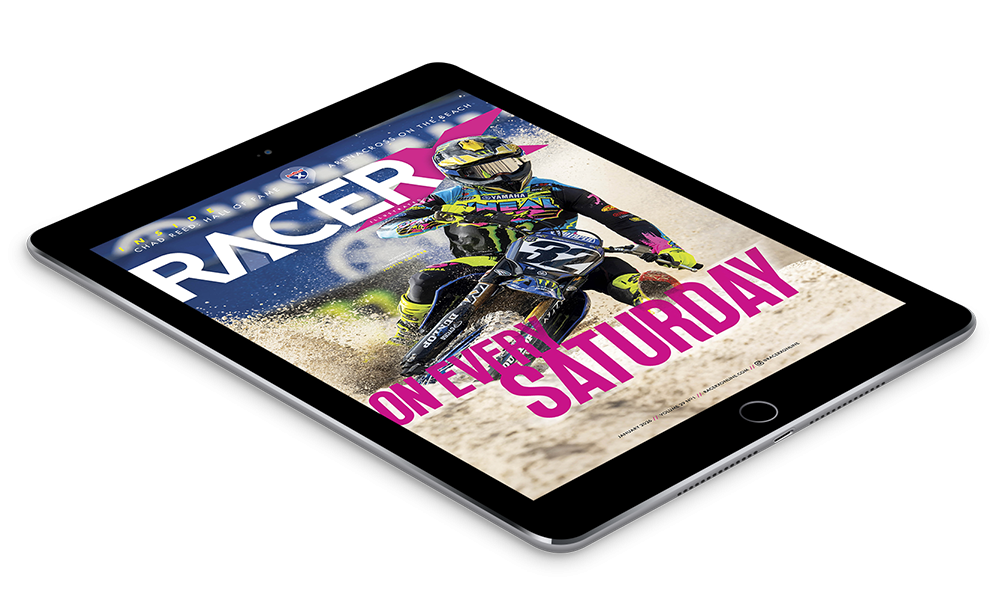Jeff Spencer was the original trainer-to-the-stars of American motocross. A former Olympic cyclist, Spencer began his work in the sport as a part of Team Honda in 1981. From that very point forward, he had a profound effect on educating the world’s best racers in applying very calculated methods in training, nutrition and injury management to their sport. After accomplishing what he wanted to in motocross, Spencer moved on to international cycling, where he eventually became a part of Lance Armstrong’s Tour de France-dominating machine.
Spencer returned to motocross a few years back and now works closely with both the revitalized veteran Nathan Ramsey and the 2008 Monster Energy AMA Supercross Championship contender Kevin Windham. Spencer utilizes a unique, highly-evolved approach when working with his athletes and one that sees him keeping a low profile, eschewing all the distractions that come on race day in an effort to focus and concentrate on the task at hand: Getting his riders performing at the most optimal level they are capable of.
Racer X: Jeff, how did you become interested in motocross?
Jeff Spencer: My first introduction to motocross was through a neighbor of mine named Bruce Burness. Bruce was the Ohlins shock representative and the go-to guy for suspension geometry and set-up for all the factories. He is a recreational cyclist and he and I did some riding together and I told him that I’d seen the Carlsbad GP on television, and I asked him about the conditioning demands of motocross. That was what I was studying in school and, having been an Olympic athlete, those things were of great interest to me. So he told what the riders at that time were doing to prepare for the sport and I could see immediately that there was a disconnect between what they were doing and what could be done to make sure they could ride the bike to the fullest and put in top performances.
How did you first begin working with Honda?
That was another Bruce Burness connection: he was very good friends with the Honda factory and at that time the factory was interested in doing a complete renovation of their sports program because they weren’t getting the results they wanted. I spoke with one of the executives in the race department down there about my observations and he realized that one thing that was essential to their becoming a championship team — and it was also something that was missing from the sport at that time — was some type of formal training methodology to develop the mentality and the fitness of the riders. We developed a formal relationship where I would work as an advisor to American Honda. That was a tenure I did for four years exclusively with American Honda. Then at the end of my fourth year I became an independent contractor to independent riders. I had the great pleasure of working for seven years with Jeff Ward. There was also time spent with Rick Johnson and Broc Glover. And while at Honda, I worked with Donnie Hansen, Chuck Sun, Darrell Shultz, Bob Hannah, Johnny O’Mara and David Bailey…. I also went on to work with Jeff Stanton for three years. And most recently, I spent five years working with Chad Reed. Now I’m heavily involved with Kevin Windham and Nathan Ramsey.
What did you bring to the sport in the 1980s that it was missing before?
It was a formalized approach to developing the champion’s mentality and fitness necessary to be able to put in a top performance at every race and to be able to create a sustainable season where you’re always performing at your best. At that time there was a lot of guesswork that was being done in terms of training. Most of the riders were either over or under training and their performances were hit or miss. This was a direct, purposeful intervention to be able to be able to create consistent, top performances.
You left the sport of motocross in the 1990s. What did you do during that period of time?
After my three years with Jeff Stanton—after he retired—I moved into the international cycling world. I did what amounted to an eight-year tenure with Lance Armstrong and the U.S. Postal and Discovery professional cycling teams. Most of my work was based around the Tour de France and preparing the riders to be able to but their best efforts forth every day during the tour and also to be there to take charge of injuries and to accelerate injury recovery and injury downtime. So it was really a combination of assets that I brought to that environment. It was certainly a very rewarding relationship and tenure with me and all the riders. It was really the most prolific dynasty in the history of sports. They won eight consecutive world championships.
From what you have learned along the way in cycling and the sports, do you feel that the knowledge and insight that you possess puts you ahead of the game in motocross?
Yes, 100 percent. I don’t really care if people know what I’m doing because it’s always going to be different the following year because the most successful element in an athlete’s career is how well they develop and how well they adapt to their existing conditions. The reason why we won eight consecutive Tour de France victories was that we were always reinventing a new system that was current for real-time needs. For me, that’s the most important thing that I always look towards. I am building my arsenal of knowledge and information and my tool kit. We’re continually investigating and implementing revolutionary new technologies and ways of remaining a consistent top performer and maintaining a competitive edge.
You began working with Kevin Windham last summer. To many, Kevin has been the revelation of the 2008 SX season. What was and is you approach in working with him?
The most important thing with any rider in developing a program is understanding what the needs are. And those needs can fall into a variety of different categories. There is the past history of training. There is the past history of injuries. There are the strengths and weaknesses that a rider brings to a program and they need to go through an analysis of where those are prioritized so that the right program can be constructed for the athlete. And that’s where it began with Kevin: We spent a lot of time together just for me to get a real sense of what the landscape was and how and why we should construct the program that would bring out the best in him. Over time it has evolved into its current incarnation. And it’s something that you can never rush. And the way that I work with all my athletes is that I never try to make an athlete fit what I know. I always look at them to dissect what their personal needs are and then I draw from my toolbox and create a system based upon that. I think Kevin has done a terrific job this year and this speaks volumes to his commitment to adapt and implement.
Another very important story that everybody should take a very strong look at and analyze very carefully is Nathan Ramsey’s comeback from his very, very serious injuries from last March. By all accounts, if you ask anybody who was involved in dealing with his injuries, they would tell you that they would expect nothing more than retirement for those types of injuries, yet Nathan is back now and performing better than he has ever performed in any (450) series in his career. Again, both of these stories are very rewarding for me because I’ve been in both of them. Both stories are a great testimony for what’s possible for anybody if you have the right technology and you know how to apply it in the right way at the right time.
Good luck with the rest of the season, Jeff.
I appreciate that, thank you.
